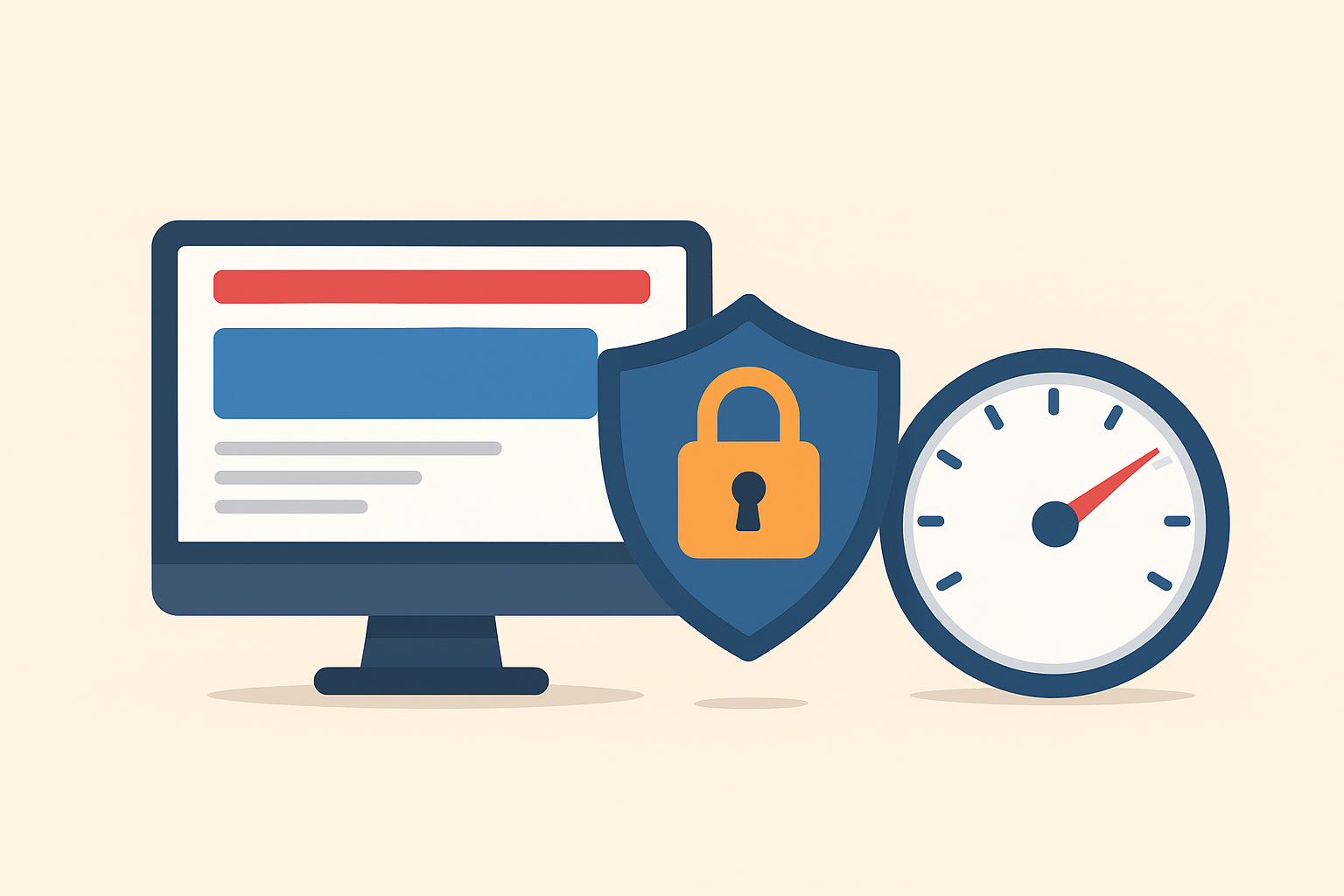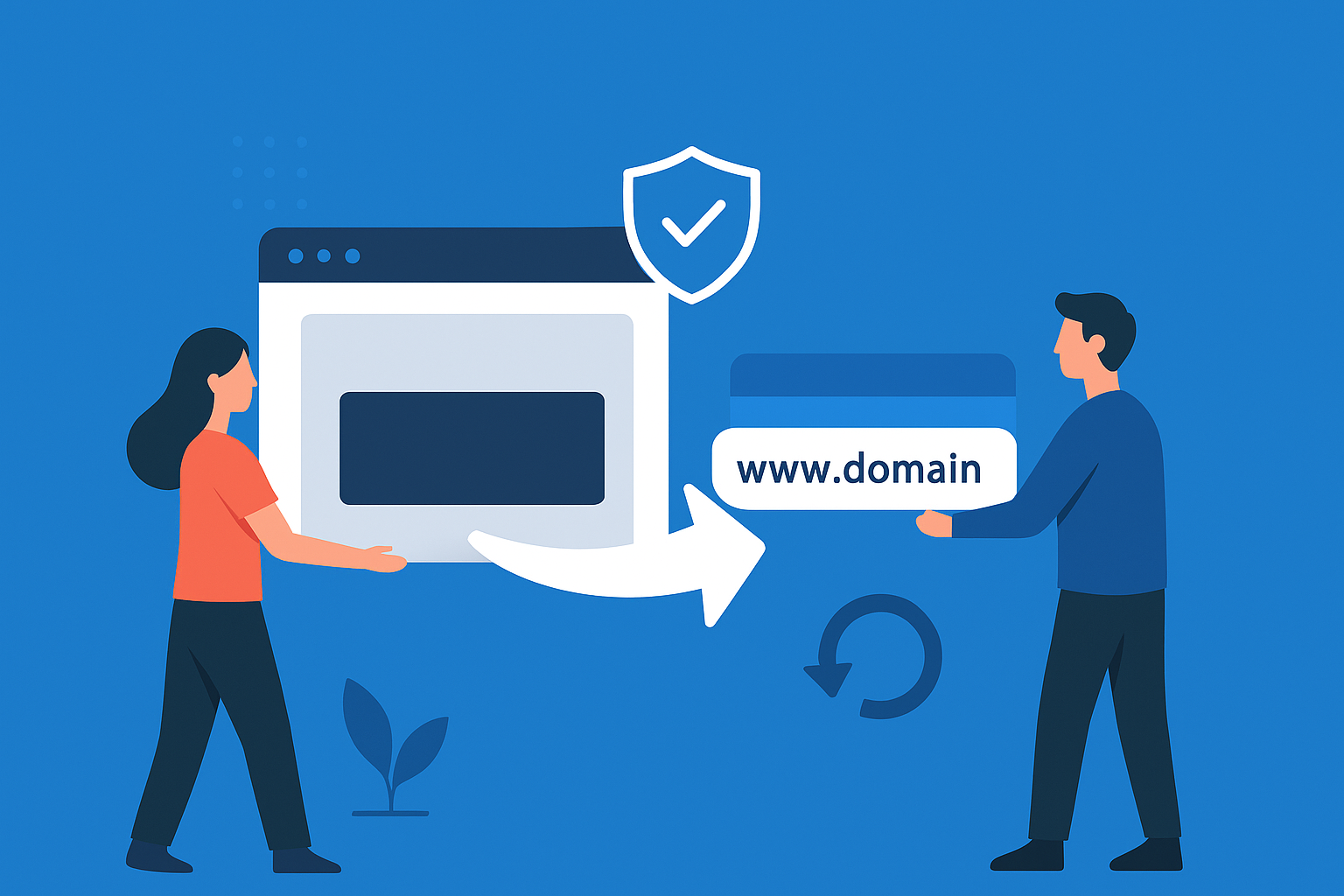In today’s hyperconnected world, every website — from small business portals to massive eCommerce stores — is a potential target for hackers. A Website Vulnerability Check is not just a technical audit; it’s your first and most powerful defense against online threats. When left unchecked, security weaknesses in your site’s code, plugins, or configurations can be exploited to steal data, plant malware, or hijack user accounts. Regularly performing a Website Vulnerability Check ensures your digital presence remains safe, compliant, and trustworthy.
This process identifies hidden flaws and potential attack points before cybercriminals can exploit them. Whether it’s outdated software, insecure passwords, or misconfigured servers, a Website Vulnerability Check provides deep insights into your website’s health. It empowers you to fix vulnerabilities proactively and prevent costly breaches. In an age where reputation and security are tightly linked, Website Vulnerability Checks are no longer optional — they are a necessity for every serious business.
A well-executed Website Vulnerability Check not only protects your website but also boosts user confidence, enhances search engine ranking, and aligns your business with cybersecurity best practices. It is an investment that pays off by securing your site’s performance, maintaining compliance with data protection laws, and safeguarding customer trust — all essential elements for long-term online success.
Introduction
A website may look perfect from the outside — fast, responsive, and well-designed — but under the surface, it may have hidden vulnerabilities that put your business at serious risk. A Website Vulnerability Check is the process of identifying, analyzing, and fixing weaknesses in your web infrastructure before they can be exploited by attackers. At FixHackedSite, we understand that one unnoticed flaw can lead to devastating cyber incidents, from data theft to complete website takeovers.
Today’s digital environment is full of evolving threats, where even a minor oversight can be exploited by hackers using automated bots or advanced malware. Without performing regular Website Vulnerability Checks, you’re leaving your online assets unguarded, inviting potential downtime, loss of revenue, or worse — irreversible reputation damage. Modern businesses depend on digital trust, and that trust begins with a secure foundation.
By performing a Website Vulnerability Check, you create a security shield around your brand. It’s not just about spotting weaknesses; it’s about staying one step ahead of attackers. When done right, this process enhances overall system integrity, improves performance, and ensures your customers interact with your website confidently. FixHackedSite helps businesses perform deep vulnerability scans, analyze risks, and implement robust solutions for a safer digital ecosystem.
Understanding Website Vulnerabilities
Every website runs on layers of code, frameworks, and external dependencies. These layers often contain small cracks — vulnerabilities — that can become open doors for hackers. Understanding the concept of website vulnerabilities is the foundation of web security. A vulnerability can arise from a flawed piece of code, a misconfigured server, or an unpatched plugin. These weaknesses compromise the confidentiality, integrity, or availability of your digital assets.
When a vulnerability is discovered by malicious actors, it can be exploited using automated attacks like SQL injections, cross-site scripting (XSS), or brute-force login attempts. These are not just technical terms; they represent real-world threats capable of stealing sensitive data or disabling websites entirely. Website Vulnerability Checks identify such flaws before they can be abused, ensuring your systems remain protected.
The more complex a website becomes, the higher the risk of vulnerabilities. Integrating third-party services, plugins, or content management systems can introduce security holes if not managed carefully. Regular vulnerability assessments keep your site’s defenses updated, allowing you to stay proactive rather than reactive. By understanding how vulnerabilities originate and spread, you lay the groundwork for a resilient and secure online platform.
Importance of Regular Website Vulnerability Checks
Performing a Website Vulnerability Check once is not enough. The digital landscape changes daily — new exploits, emerging malware, and software updates constantly shift the balance of cybersecurity. Regular checks are essential for maintaining a strong defense. When vulnerabilities go undetected, they create invisible backdoors for cybercriminals. Even a small delay in patching can lead to severe consequences, such as data breaches or ransomware infections.
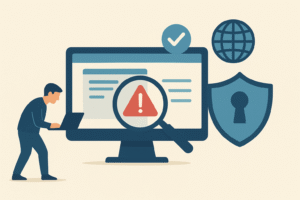 Routine vulnerability checks serve as a preventive maintenance strategy for your online presence. Just like a car needs periodic servicing, your website requires ongoing monitoring to ensure it performs securely. A consistent Website Vulnerability Check schedule helps detect weak points early, reduces downtime, and maintains compliance with data protection standards like GDPR or PCI DSS. This proactive approach keeps your reputation intact and your users safe.
Routine vulnerability checks serve as a preventive maintenance strategy for your online presence. Just like a car needs periodic servicing, your website requires ongoing monitoring to ensure it performs securely. A consistent Website Vulnerability Check schedule helps detect weak points early, reduces downtime, and maintains compliance with data protection standards like GDPR or PCI DSS. This proactive approach keeps your reputation intact and your users safe.
Furthermore, regular scans can uncover issues that impact website performance, not just security. Vulnerability checks often reveal misconfigurations or outdated software components that slow down load times or cause errors. By addressing these issues promptly, you enhance both security and user experience. Continuous monitoring ensures that your site stays resilient, trustworthy, and capable of adapting to evolving cyber threats.
Common Website Vulnerabilities That Need Immediate Attention
Understanding what makes websites vulnerable helps you focus on the areas that require immediate action. Some of the most common vulnerabilities include outdated software, weak passwords, insecure configurations, and unvalidated user input. Each of these flaws serves as an entry point for attackers looking to exploit weaknesses. A comprehensive Website Vulnerability Check uncovers these risks before they turn into costly breaches.
Outdated software and plugins are among the biggest culprits. Developers release patches to fix known vulnerabilities, but if your website is not updated regularly, it becomes an easy target. Weak or reused passwords add another layer of risk, especially when administrators fail to use multi-factor authentication. Similarly, poorly configured servers, databases, or file permissions can expose sensitive information unintentionally.
Input validation errors are another major source of compromise. When websites fail to validate data entered by users, attackers can inject malicious scripts or code. These attacks can alter databases, steal data, or even hijack user sessions. Conducting frequent Website Vulnerability Checks helps detect such flaws early, giving you a chance to fix them before any damage occurs. By prioritizing these common weaknesses, you strengthen your website’s defense against the most prevalent cyber threats.
Website Vulnerability Scanning Tools and Their Role in Security
A Website Vulnerability Check often starts with the use of specialized scanning tools designed to detect weaknesses in your website’s code, configurations, and network layers. These tools simulate attacks to identify flaws before real hackers do. They scan your website’s URLs, databases, and file systems, checking for issues like outdated software, SQL injection risks, and cross-site scripting vulnerabilities. Modern scanners can even integrate with Content Management Systems (CMS) like WordPress or Joomla to assess plugin and theme vulnerabilities in real time.
The effectiveness of these tools lies in their ability to provide detailed reports on detected vulnerabilities and suggest remediation strategies. Whether you’re running an e-commerce platform or a corporate site, automated scanners such as OWASP ZAP, Acunetix, or Burp Suite can perform a deep Website Vulnerability Check efficiently. They uncover potential risks that might be overlooked in manual inspections and ensure that your website remains compliant with security standards.
However, no tool can guarantee 100% accuracy. False positives and missed vulnerabilities are possible, which is why combining automated scans with expert analysis is vital. Professionals can interpret the results correctly, prioritize risks, and take corrective action. By integrating scanning tools into your website’s maintenance cycle, you create an ongoing security layer that continuously monitors and strengthens your digital assets against evolving threats.
Manual vs Automated Website Vulnerability Testing
When it comes to performing a Website Vulnerability Check, there are two main approaches — manual testing and automated scanning. Each has its advantages, and the best results often come from combining both. Manual testing involves cybersecurity experts manually inspecting your website’s code, logic, and structure to identify subtle vulnerabilities that automated tools may miss. It’s a highly detailed process that relies on human expertise and experience.
On the other hand, automated testing uses software tools to scan your website quickly for known vulnerabilities. This approach is faster and more scalable, making it ideal for routine checks and large websites with many pages. Automated Website Vulnerability Checks can identify common issues like outdated plugins, weak configurations, and known exploit patterns, providing immediate insight into your site’s security status.
While automated testing saves time, manual testing offers depth and precision. Security experts can simulate complex attacks, such as business logic flaws or privilege escalation attempts, which automated scanners often fail to detect. Combining both methods ensures comprehensive protection. Automated scans handle the repetitive, large-scale tasks, while manual assessments address the deeper, more intricate vulnerabilities — creating a balanced and effective defense system for your website.
The Importance of Server-Side Security in Website Vulnerability Checks
Many website owners focus solely on their site’s frontend, neglecting the backend where the real control lies — the server. Server-side security plays a crucial role in the success of a Website Vulnerability Check. Since servers host your website’s files, databases, and critical system resources, they are prime targets for hackers. If compromised, attackers can gain complete access to your website and data. A single misconfiguration, weak access credential, or outdated server software can lead to devastating security breaches.
A thorough Website Vulnerability Check evaluates both application-level and server-level risks. It ensures that operating systems, database servers, and web servers (like Apache or Nginx) are fully patched and configured securely. It also checks for insecure open ports, outdated SSL certificates, and weak firewall settings. These are common vulnerabilities that cybercriminals exploit to gain unauthorized access or inject malicious code.
Additionally, implementing strong access controls and monitoring tools enhances server resilience. Restricting root access, using secure file permissions, and maintaining activity logs are critical practices. Regular server patching, combined with vulnerability checks, prevents hackers from exploiting known flaws. A secure server environment forms the backbone of a safe and reliable website, and consistent Website Vulnerability Checks ensure that no cracks are left unattended in your digital defense.
The Role of SSL and HTTPS in Website Vulnerability Prevention
An often-overlooked yet powerful layer of website security is SSL (Secure Sockets Layer) and HTTPS encryption. These technologies are essential in reducing vulnerabilities by encrypting data transmitted between your website and its users. When a website runs without SSL, data such as login credentials, personal details, or payment information can be intercepted by attackers. A Website Vulnerability Check ensures that your SSL certificates are valid, properly installed, and configured to meet modern security standards.
Using HTTPS not only protects sensitive data but also builds user trust and improves search engine rankings. Visitors are more likely to engage with websites that display a secure padlock in their browsers. Modern Website Vulnerability Checks also evaluate SSL strength, ensuring your encryption uses the latest TLS protocols and that there are no weak ciphers or expired certificates. This proactive approach prevents man-in-the-middle (MITM) attacks and ensures full compliance with data protection regulations.
Beyond encryption, SSL plays an important role in validating authenticity. It confirms that users are communicating with the legitimate version of your website and not a spoofed or malicious copy. Regular vulnerability checks ensure SSL configurations remain up to date and detect potential downgrade attacks or certificate issues. Implementing and maintaining a strong SSL setup is one of the simplest yet most effective steps toward building a secure, trustworthy web presence.
Database Security and Its Role in Website Vulnerability Checks
Your website’s database is its digital heart — storing user information, content, orders, and sensitive data. This makes it a prime target for cybercriminals seeking to exploit vulnerabilities. A Website Vulnerability Check must include a thorough examination of your database security. Weak database configurations, unencrypted storage, or exposed credentials can allow attackers to steal or manipulate data. Even a small oversight, such as failing to restrict database access to trusted IPs, can result in catastrophic breaches.
To prevent such threats, Website Vulnerability Checks assess areas like SQL permissions, backup integrity, and encryption strength. Properly configured firewalls, updated database management systems, and regular access audits are key components of a secure database environment. Vulnerability scans help detect open database ports, outdated versions, and unsafe query executions that could expose your entire website infrastructure to risk. Maintaining strong password policies and separating user privileges further reduces potential attack surfaces.
Moreover, consistent monitoring and patch management protect against evolving database exploits. Attackers frequently target known flaws in popular systems like MySQL or PostgreSQL. By ensuring your databases are up to date and configured correctly, you reinforce the foundation of your website’s security. When combined with strong encryption, limited access controls, and regular vulnerability checks, your database becomes one of the most secure components of your digital ecosystem.
Cross-Site Scripting (XSS) and How to Prevent It
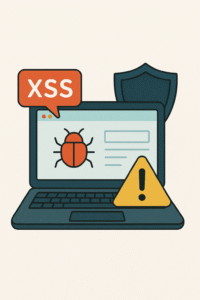 Cross-Site Scripting (XSS) is one of the most common and dangerous web vulnerabilities, allowing attackers to inject malicious scripts into web pages viewed by other users. When executed, these scripts can steal cookies, hijack sessions, or redirect visitors to phishing sites. A Website Vulnerability Check plays a crucial role in detecting and preventing XSS attacks by scanning for unvalidated input fields and poorly sanitized user data.
Cross-Site Scripting (XSS) is one of the most common and dangerous web vulnerabilities, allowing attackers to inject malicious scripts into web pages viewed by other users. When executed, these scripts can steal cookies, hijack sessions, or redirect visitors to phishing sites. A Website Vulnerability Check plays a crucial role in detecting and preventing XSS attacks by scanning for unvalidated input fields and poorly sanitized user data.
This vulnerability often occurs when websites fail to filter or escape user input in forms, comment sections, or URL parameters. Attackers exploit these weaknesses to embed harmful JavaScript or HTML code that runs in the browser of unsuspecting visitors. Website Vulnerability Checks help identify such insecure endpoints, ensuring developers can sanitize inputs, use content security policies (CSP), and implement secure coding practices. These measures drastically reduce the likelihood of an XSS attack succeeding.
Prevention of XSS requires a combination of technical and procedural controls. Using frameworks that automatically encode user inputs, implementing HTTP-only cookies, and conducting regular vulnerability assessments help eliminate this threat. Educating developers about secure input handling practices ensures long-term safety. By prioritizing XSS prevention within your website security audits, you protect not only your system but also your users’ trust and data integrity.
SQL Injection Attacks and the Power of Secure Queries
Among the most well-known and destructive web vulnerabilities is the SQL Injection (SQLi) attack. It occurs when attackers insert malicious SQL statements into input fields, manipulating a website’s database to access, alter, or delete data. A comprehensive Website Vulnerability Check identifies these weaknesses early, preventing attackers from taking control of your database or extracting confidential information.
SQL injection vulnerabilities usually arise from unsafe coding practices where user input is directly included in database queries without proper validation. For instance, an insecure login form can allow hackers to bypass authentication or retrieve sensitive records. Website Vulnerability Checks test these entry points rigorously, ensuring that prepared statements, parameterized queries, and stored procedures are used instead of raw queries. This greatly reduces the risk of injection-based attacks.
Beyond query validation, modern frameworks offer built-in protections against SQL injection, but regular testing remains essential. Automated scanners and manual testing combined can detect even hidden injection points that developers might miss. By implementing proper input sanitization and continuous vulnerability assessments, you ensure that your website’s database interactions remain secure, stable, and immune to exploitation.
Password and Authentication Vulnerabilities
One of the most overlooked yet critical areas in website security is password and authentication management. Weak or reused passwords, lack of two-factor authentication (2FA), and improper session handling are leading causes of breaches worldwide. A detailed Website Vulnerability Check investigates the strength of authentication systems to ensure that only authorized users can access sensitive sections of your website.
Passwords remain the first line of defense. However, many websites fail to enforce robust password policies or use secure hashing algorithms to protect stored credentials. Attackers can exploit these weaknesses through brute force or credential-stuffing attacks. Website Vulnerability Checks identify such vulnerabilities by testing for weak password mechanisms, insecure cookie handling, and lack of multi-factor authentication — all of which can compromise your website’s integrity if left unchecked.
To strengthen authentication systems, modern websites must adopt industry best practices such as bcrypt or Argon2 for password hashing, implement 2FA for admin accounts, and monitor login activity for suspicious behavior. Secure session management ensures that user tokens are valid only for active sessions, reducing the risk of hijacking. By addressing authentication vulnerabilities during vulnerability checks, you build a strong, impenetrable layer of protection for your users and data.
File Upload Security and Its Role in Website Protection
Allowing users to upload files — such as images, documents, or forms — is a common feature on many websites. However, it’s also one of the most exploited features by hackers. Improper file upload mechanisms can enable attackers to upload malicious files, including scripts designed to take control of your website. A Website Vulnerability Check ensures that all file upload points are properly secured, preventing potential backdoor access to your server.
File upload vulnerabilities often occur when websites fail to validate file types, sizes, and permissions. For instance, an attacker might upload a disguised PHP or JavaScript file under the guise of an image, allowing them to execute commands on your server. Website Vulnerability Checks help detect these weak configurations by analyzing upload directories, testing MIME type validation, and ensuring file storage locations are isolated from executable directories. This reduces the risk of arbitrary code execution.
Strengthening file upload security involves implementing a multi-layered approach. Websites should restrict accepted file types, use random file naming, and scan uploaded content for malware. Additionally, moving uploaded files to non-public directories and setting strict file permissions minimizes exposure. Regular vulnerability scans detect any loopholes that could lead to exploitation. By securing file uploads through consistent Website Vulnerability Checks, you ensure that convenience never comes at the cost of safety.
The Hidden Dangers of Third-Party Plugins and Extensions
Plugins and extensions bring functionality and flexibility to modern websites, but they also introduce significant security risks. Every additional plugin adds new code — and with it, the possibility of new vulnerabilities. A Website Vulnerability Check plays a vital role in identifying insecure, outdated, or malicious plugins that could compromise your site. Attackers often target popular plugins because they know many users fail to keep them updated.
The problem with third-party plugins is that their codebase is not under your control. Even reputable developers can make mistakes, and attackers can exploit those errors to gain unauthorized access. Website Vulnerability Checks review plugin versions, developer credibility, and update frequency to detect weak points. They also test for known exploits or outdated components that could allow attackers to inject malware, steal user data, or redirect traffic.
To minimize risk, always use plugins from trusted sources, keep them updated, and remove any that are unnecessary or abandoned. Conducting regular Website Vulnerability Checks ensures all extensions comply with security standards and have no exposed vulnerabilities. By managing your plugin ecosystem wisely, you balance website functionality with robust security — protecting both your performance and reputation.
The Importance of Website Backup and Recovery Systems
Even the most secure websites are not completely immune to attacks. That’s why maintaining a reliable backup and recovery system is essential. A Website Vulnerability Check doesn’t just identify weaknesses; it also ensures that your backup processes are effective, frequent, and safely stored. Backups act as a safety net — if a breach or failure occurs, you can restore your website to a stable state without losing vital data.
Many website owners overlook the importance of off-site backups or assume that their hosting provider handles everything. However, without a verified recovery plan, restoring your site can become a nightmare. Website Vulnerability Checks evaluate whether your backups are encrypted, regularly tested, and stored in secure locations. They also check for backup automation to ensure data is saved consistently without manual intervention. These assessments guarantee that your business can recover quickly from any unexpected incident.
A strong backup strategy includes multiple layers: full backups, incremental backups, and database backups. Storing copies in different physical or cloud-based locations further enhances reliability. Integrating vulnerability assessments with disaster recovery planning ensures you can respond rapidly to security incidents. Ultimately, a robust backup system transforms potential downtime into a short interruption — preserving your data integrity and brand trust.
The Role of Firewalls in Website Vulnerability Prevention
Firewalls are your website’s first line of defense, filtering incoming and outgoing traffic to block malicious requests. A Website Vulnerability Check assesses how effectively your firewall configuration protects against intrusions. Whether you use a Web Application Firewall (WAF) or a server-based firewall, it plays a critical role in preventing SQL injections, cross-site scripting, and other automated attacks. Firewalls monitor patterns and behaviors, detecting anomalies that may indicate attempted breaches.
A Website Vulnerability Check reviews firewall rules, response times, and integration with intrusion detection systems. Weak or outdated firewall rules can leave your website exposed to new threats. By ensuring your firewall is up to date, properly configured, and supported by real-time monitoring, you strengthen your site’s perimeter defense. The check also analyzes if your WAF is blocking legitimate traffic or allowing suspicious requests, striking a balance between protection and accessibility.
To maximize firewall efficiency, it’s essential to combine automated rule updates with manual oversight. Some attacks, especially zero-day exploits, can bypass outdated rules. Continuous vulnerability checks keep your firewall aligned with the latest threat intelligence. When integrated with server security and SSL encryption, a well-configured firewall becomes an unbreakable shield — ensuring your website remains safe and resilient against modern cyberattacks.
Security Compliance Audits and Their Connection to Website Vulnerability Checks
In today’s cybersecurity-driven business world, compliance is more than a legal requirement — it’s a benchmark for credibility and trust. A Website Vulnerability Check is deeply interconnected with security compliance audits, as both focus on ensuring that your website meets global security standards such as GDPR, PCI DSS, HIPAA, and ISO 27001. Failure to comply with these regulations can result in hefty fines, loss of customer trust, and even legal penalties.
During a compliance audit, your website’s data handling, storage, and security protocols are thoroughly reviewed. A Website Vulnerability Check assists this process by uncovering potential weaknesses that may violate compliance requirements. For example, insecure data transmissions, unencrypted personal information, or lack of proper user consent mechanisms can all breach compliance standards. Regular vulnerability checks make it easier to maintain continuous alignment with these rules.
Beyond legal benefits, compliance enhances your brand’s reputation and customer confidence. Clients are more likely to trust websites that demonstrate transparent security measures. By integrating compliance audits with vulnerability assessments, you create a strong defense strategy that not only prevents breaches but also promotes accountability. A secure and compliant website becomes a symbol of professionalism and responsibility in the digital world.
Continuous Monitoring and Real-Time Vulnerability Management
Performing a Website Vulnerability Check once a year is no longer sufficient in the current cyber landscape. Attackers constantly evolve their tactics, discovering new vulnerabilities daily. This is where continuous monitoring and real-time vulnerability management become indispensable. By maintaining constant surveillance over your website’s systems, you can identify and neutralize threats before they escalate into full-scale attacks.
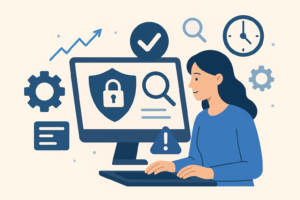 Modern Website Vulnerability Checks include tools and systems that provide 24/7 scanning, alerting administrators instantly when unusual activity or configuration changes occur. This ensures that security gaps are closed quickly, minimizing potential exposure. Continuous monitoring also provides valuable insights into traffic patterns, failed login attempts, and emerging threat behaviors — helping your team stay proactive rather than reactive.
Modern Website Vulnerability Checks include tools and systems that provide 24/7 scanning, alerting administrators instantly when unusual activity or configuration changes occur. This ensures that security gaps are closed quickly, minimizing potential exposure. Continuous monitoring also provides valuable insights into traffic patterns, failed login attempts, and emerging threat behaviors — helping your team stay proactive rather than reactive.
Real-time management doesn’t stop at detection; it involves immediate mitigation and verification. Security experts must validate alerts, apply patches, and recheck system stability after each fix. Combining automated monitoring with professional oversight guarantees robust protection and uninterrupted performance. By investing in continuous vulnerability management, your website remains resilient and ready to withstand any cybersecurity challenge that arises.
The Future of Website Vulnerability Management
As technology advances, so do cyber threats. The future of Website Vulnerability Management lies in the integration of artificial intelligence (AI), machine learning (ML), and automated response systems. These technologies enable faster detection, smarter prioritization, and instant remediation of security flaws. Instead of waiting for manual analysis, AI-driven tools can predict potential attack vectors based on behavioral data — making future Website Vulnerability Checks far more dynamic and intelligent.
Automation is transforming how vulnerability assessments are performed. Continuous, adaptive scanning powered by AI ensures no weak point goes unnoticed. Moreover, with the rise of cloud-based infrastructure, containerized environments, and decentralized applications, the scope of vulnerability management has expanded beyond traditional websites. Website Vulnerability Checks of the future will cover hybrid systems that include APIs, mobile platforms, and connected devices.
In addition, user education and awareness will play a pivotal role in upcoming cybersecurity strategies. Even the most advanced technologies cannot compensate for human negligence. Businesses must cultivate a culture of security — one where regular vulnerability assessments, timely updates, and strong digital hygiene are part of everyday operations. The evolution of Website Vulnerability Checks ensures that as cyber threats grow more sophisticated, website protection grows stronger too.
Conclusion
A secure website is not just about performance; it’s about trust, reliability, and long-term stability. Conducting a thorough Website Vulnerability Check helps safeguard your digital presence from a wide range of threats, from malware injections to database breaches. Each element — from firewalls and encryption to password security and backups — works together to create a robust defense system that protects your data, customers, and reputation.
Cybersecurity is an ongoing process, not a one-time task. Regular Website Vulnerability Checks, combined with proactive monitoring and expert analysis, ensure that your website remains secure in the face of ever-changing digital threats. The cost of prevention is always lower than the cost of recovery after an attack. Maintaining vigilance, updating systems, and prioritizing security audits are the cornerstones of a strong online foundation.
At FixHackedSite, we specialize in identifying, fixing, and preventing vulnerabilities that threaten your online presence. Our comprehensive security services and expert-driven solutions help you stay ahead of cybercriminals, ensuring your website performs safely and efficiently. Whether it’s vulnerability scanning, malware removal, or long-term security monitoring, FixHackedSite is your trusted partner in building a secure, reliable, and future-ready website.

